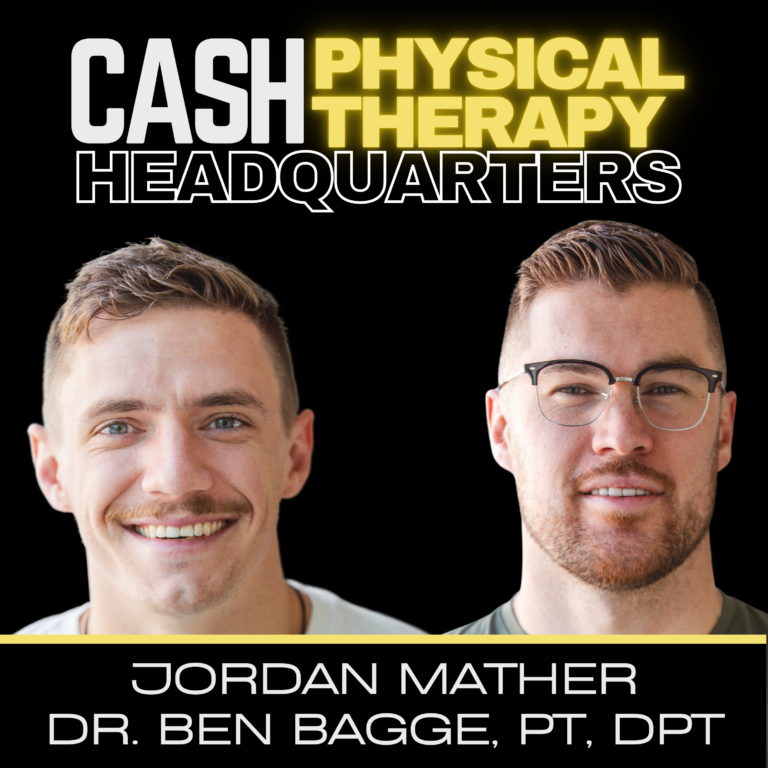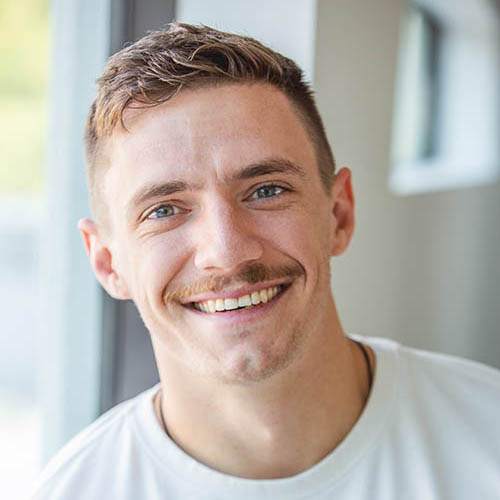
If you’re a cash-based practice owner or a PT who’s feeling burned out in traditional treatment roles, there’s a new opportunity emerging in 2025 that you need to know about:
Cash PT closers – Doctors of Physical Therapy who specialize in sales, intake, and conversions, not hands-on treatment.
This new role is reshaping how cash practices grow, how leads are handled, and how PTs can design careers with more autonomy, flexibility, and financial upside—often with the ability to work remotely.
In this blog, we’ll break down:
What a cash PT closer / patient intake coordinator actually does
Why having a DPT in the sales seat changes everything
How this role improves conversions, patient experience, and team structure
What compensation and structure can look like
How this fits into the future of cash-based healthcare
Why the Front-End Role Is the Most Important Seat in Your Practice
Most clinics still treat the front-end as a low-level position:
Phone calls, intake, and lead follow-up are handled by
A busy admin
A part-time college kid
The lowest-paid person in the entire business
But think about it:
The person who answers the phone and talks to your leads is often the first impression of your brand. They’re the one who:
Sets the tone for trust
Explains your value
Frames the investment
Handles fears, doubts, and objections
In reality, this position is one of the highest-leverage roles in your practice—yet most owners staff it like an afterthought.
At Pro Kinetics, that’s not the case.
They have a Doctor of Physical Therapy as the first point of contact.
And that’s been one of the biggest drivers behind scaling into one of the largest cash-based clinics in the U.S.
From Admin on the Phones… to Doctor of Physical Therapy as Closer
For the first three years at Pro Kinetics, Ben handled all the discovery calls himself.
He knew how critical the role was
He knew that whoever took those calls would make or break growth
But eventually, he needed his time back
So he tried what most owners do:
He hired admin help to take over calls.
They followed the script.
Their tone was good.
They did “everything right.”
And yet—conversion rates were still 5–10% lower than when Ben did the calls himself.
The only real difference?
“I have ‘Doctor’ in front of my name.”
When a lead got a text that said:
“Hey, this is Dr. Ben, I’ll be calling you in 5 minutes,”
answer rates shot up. People respected the call, prioritized it, and were more open to recommendations.
That’s when the realization landed:
Having a DPT in that role doesn’t just feel better… it performs better.
And at scale, a 5–10% increase in conversion isn’t a rounding error—it’s massive.

What Is a Cash PT Closer / Patient Intake Coordinator?
This isn’t a front desk role with a million random tasks.
This is a pure sales and intake role—held by a Doctor of Physical Therapy.
Core Responsibilities
A cash PT closer is responsible for:
Answering and returning all inbound calls
Following up with:
Website leads
Missed calls
Facebook / Instagram ad leads
DMs and inquiries from social media
Running discovery calls
Qualifying fit for the clinic
Booking appropriate appointments at the right times
Managing their lead pipeline and follow-ups
They are not:
Doing reschedules
Handling front-desk chaos
Greeting walk-ins
Managing forms, insurance, or general admin tasks
Their entire focus is:
“Every person who raises their hand and asks for help gets a call, gets heard, and gets guided into the best next step.”
Why PTs Are Flocking to This Role
When Pro Kinetics posted their second patient intake coordinator position, the response was wild:
The listing was live for ~10 days
They received 80+ applications
All from qualified Doctors of Physical Therapy
That’s the same volume they typically get for entry-level admin roles—but this time, from DPTs.
Why?
Because the profession is burned out.
There’s a growing group of PTs who:
Can’t see themselves treating 5–8 patients a day for another 10–30 years
Want more flexibility and control over schedule
Want to work remotely or in a hybrid role
Still want to change lives, just without the physical and emotional grind of full caseloads
The cash PT closer role gives them that:
Deep patient impact through education and guidance
Real-time conversations that change trajectories
Often performance-based compensation with higher upside
Freedom from productivity quotas, documentation madness, and mill-style schedules

How AI Is Changing the Game—and Why a Human DPT Still Wins
At the same time this role is emerging, we’re also seeing the rapid rollout of AI-driven outbound voice systems.
Tools like Go High Level’s upcoming voice AI can:
Call leads automatically
Qualify them
Book them into discovery calls
In some cases, even book full evaluations
This means:
Smaller clinics running lean will likely rely heavily on AI to follow up with leads
Many consumers will soon be talking to AI on the front end at most clinics
Which makes this the real differentiator:
“You’re not talking to a bot—you’re talking to a Doctor of Physical Therapy.”
For clinics that can afford it (typically once they hit the $20–30k/month mark), having a real DPT in the sales seat is going to feel like a breath of fresh air in a world of AI phone trees and robotic follow-up.
The future likely looks like:
AI handling basic outbound attempts and reminders
Human DPT closers handling real conversations, nuance, objections, and higher-stakes decisions
Compensation: How Do You Pay a Cash PT Closer?
There are a lot of ways to structure this, but the key is:
Tie their compensation to performance, not just hours.
At Pro Kinetics, the first intake DPT transitioned from a salaried PT role into the phone role and kept his salary. That worked—but it’s not ideal for a sales-heavy position.
For the second intake coordinator, the structure is more performance-based:
A lower base salary
Plus bonuses tied to:
Show-ups (not just bookings)
Why show-ups?
Because:
This role’s responsibility is getting people in the door
Once they show up, Pro Kinetics knows that ~90% will convert into a package
So the closer is incentivized to book real, quality appointments—not just pack the schedule with low-commitment calls
In the future, there will likely be some upside tied to downstream conversions, but it has to be done carefully so:
The closer isn’t biased toward only certain PTs
The load is fairly distributed
The role remains focused on volume + quality, not politics
You can also build a growth ladder:
Step 1: Patient Intake Coordinator / Cash PT Closer
Step 2: Sales Manager / Revenue Director – responsible for:
Training other PTs in sales
Supporting eval-to-plan-of-care conversions
Optimizing scripts, talk tracks, and close rates
That’s a real career path a lot of PTs would get excited about.
How This Role Changes Your Admin Position (For the Better)
When you pull lead follow-up and phone sales away from your admin and give it to a DPT closer, everything changes.
Admins Are No Longer:
Answering leads while trying to greet patients
On a sales call while an eval is standing at the desk waiting to schedule
Constantly context-switching between:
Phones
Scheduling
Payments
Forms
Walk-ins
That chaos creates:
Dropped balls
Cold, rushed greetings
Poor plan-of-care scheduling
Higher no-show and drop-off rates
Instead, Admins Become:
Patient Experience Coordinators
Warmly greeting every person who walks in
Making sure evals get fully scheduled before they leave
Handling payments and logistics with care
Keeping in-clinic energy high and personal
And you can hire for that:
Someone kind, relational, organized
Someone who loves being in-person, present, and the “face” of the clinic
Someone who isn’t secretly also expected to be a part-time closer, scheduler, call center, and operations assistant for $18/hr
When you separate sales from front-desk operations, both roles get easier, happier, and far more effective.
Other Emerging Roles: Eval Closers & Wellness Coaches
This front-end PT closer model isn’t the only evolution happening.
Two other models are starting to emerge:
1. Eval-Only PT Closers (High-Comp Front-End PT)
Some clinics are experimenting with:
One PT doing 5–8 evals per day, every day
Earning in the $120k–$200k range
Then handing patients off to:
PTAs
Or other PTs for fulfillment and follow-through
Pros:
Huge leverage on the PT’s sales skill
Higher revenue per eval slot
Ability to pay that PT very well
Cons:
Recruitment challenge: the personality who wants to close all day and never see outcomes is rare
Emotional fatigue: high-volume sales can be draining
Massive risk if that one PT leaves—you’ve just lost your entire sales engine
2. Wellness Coaches (Remote PT Role)
Another role popping up in progressive clinics:
Wellness coaches, often remote PTs, stacked into higher-ticket programs
Focused on:
Sleep habits
Stress management
Lifestyle changes
Exercise consistency and accountability
These coaches:
Meet patients on Zoom
Support change between visits
Create a deeper relationship and emotional buy-in
Dramatically improve outcomes and retention
This is another high-impact, lower-physical-stress path for PTs who want to get out of the traditional “treat 8 patients a day” model.

How to Start Moving Toward a PT-Closer Model in Your Practice
If you’re a practice owner and this is hitting home, here’s how to start:
Acknowledge the bottleneck
Are your admins overwhelmed?
Are leads slipping through the cracks?
Are you the only one who can really “sell” your services?
Clarify the role
This is not “admin + phones + random tasks”
It is a dedicated sales & intake position
Ideally held by a Doctor of Physical Therapy
Start testing the talent pool
Post for a part-time or hybrid DPT intake coordinator
See how many applicants you get
Feel out the interest in your region or remotely
Know your numbers
Show-up rates
Eval-to-plan-of-care conversions
Revenue per new patient
These metrics guide comp plans and performance benchmarks
Design a win–win comp model
Base + performance bonuses
Tied to show-ups, not just bookings
Potential smaller piece tied to downstream conversions
Long term: split admin & sales
Let admins become patient experience pros
Let closers become expert communicators and revenue drivers
Final Thoughts: The Clinics Who Adapt Will Win
The future of cash-based healthcare is shifting fast.
AI will handle more outreach and basic admin
Patients will get more used to automation, bots, and phone trees
Human, expert, doctor-led communication will stand out even more
Putting a Doctor of Physical Therapy on the front end as a cash PT closer or patient intake coordinator may be one of the biggest competitive advantages available to clinics in the next 3–5 years.
It’s also one of the most exciting new career paths for burned-out PTs who still care deeply about patient outcomes—but don’t want to spend the next 30 years stuck in traditional care models.
If you want help:
Designing this role
Structuring compensation
Building the systems around it
And plugging it into a scalable, cash-based marketing and operations engine…
👉 Head to ClinicalMarketer.com and apply to work with us.
We’ll audit your practice, identify your biggest constraints, and help you build a 3–6 month game plan to grow with less chaos and more control.
Watch and Listen to the Full Video
For a deeper dive into a cash physical therapists’ journeys, make sure to listen to the full video: From Burnout to Freedom: How the New Cash PT Closer Role is Changing the Game in 2025.
About Author:

Although the company eventually failed, it provided Jordan with invaluable learning experiences. He became passionate about designing world-class patient experiences and building efficient marketing & sales funnels for cash physical therapists. Utilizing this expertise, Jordan became the CMO of a well-known physical therapy media company, and consulted for and built marketing funnels for some of the top physical therapy business coaches.
Eventually growing tired of the typical agency and consulting grind, Jordan, alongside Max Zirbel, founded Clinical Marketer. They infused it with the hands-on support and mentorship that they benefited from in their initial venture. The company was a success from the start, aiding clinics in scaling to 6 and 7 figures in revenue. During its first launch, Jordan and his team met Dr. Ben Bagge, whom they later partnered with after helping him grow his business from $200K/year to over $1M/year in three years.

